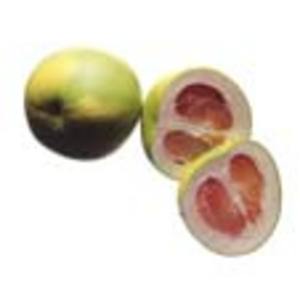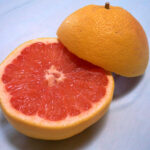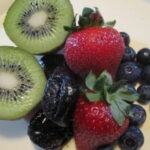We all know that we should get 5 or more servings of fruits and vegetables a day. Fruits offer a great source of vitamins to ward away illnesses and pains. The only problem is that we get tired of eating the same apple, banana, and orange. I’d like to introduce you to a great citrus fruit that comes to us from the Far East. It’s the large, yellowy, grapefruit looking Pummelo.
Pummelo fruit offers an excellent source of vitamin C, fiber and folic acid. Along with these elements, the citric acid in the Pummelo fruit offers health benefits as well. Nutritionist say that we need roughly 1 gram of vitamin C each day, 30 grams of fiber and .4 milligrams of folic acid.
Vitamin C is an important nutrient in our diet. Vitamin C is a powerful antioxidant and anti-inflammatory. These antioxidants protect us from nasty free radicals in our body. Basically, the antioxidants in the Pummelo fruit block free radicals from breaking down the needed chemicals in our body.
Vitamin C has been known to decreases incidence of asthma symptoms. A large preliminary study has shown that young children with asthma experience significantly less wheezing if they eat a diet high in fruits rich in vitamin C.
If you want to keep your body healthy then you need lots of fiber in your diet. Pummelo fruit is a wonderful source of fiber. The soluble fiber in Pummelo fruit has a positive effect on cholesterol in the body. The soluble fiber can also help with protecting your colon from cancer.
The action of waste passing through your body quickly protects you from Diverticular disease. Soluble fiber helps regulate your blood sugar and controls the effects of diabetes. I speak from experience; make sure you get enough fiber in your diet. Complications from the Diverticular diseases can be very painful and toxic.
Folic acid is especially important to women who are in the child birthing age. Folic acid helps your body heal itself and grow new tissue. So if you ever want to get a kid to eat the fruits and vegetables that have Folic Acid in them, compare the healing abilities to Wolverine! What other super hero can get a nasty cut on his face and heal so quickly!
Seriously though, Folic acid in pregnant women helps the baby produce healthy tissues and cells. Who doesn’t want a healthy baby?
So what should I be looking for at the grocery market? Well the United States produces three major types of Pummelo fruit. There is the Chandler, Nakhon and Reinking.
‘Chandler’-a hybrid of ‘Siamese Sweet’ (white) and ‘Siamese Pink’ (acid) developed at Indio, California and released in 1961; oblate to globose; of medium size; peel smooth, at times minutely hairy, medium-thick; core small; pulp pink, fine-grained, tender, fairly juicy; segment walls thin; flavor superior to that of either parent; subacid, about 12% sugar. You should look for them in early winter.
Nakhon’ (mispelled ‘Nakorn’)-introduced from Thailand in 1930 and grown by United States Department of Agriculture at Orlando, Florida, and at Foundation Farm at Leesburg; broad pear-shaped; small, 4 in (10 cm) wide; peel lemon-yellow; pulp white, of fine flavor. You should look for this fruit midseason.
‘Reinking’-a selected seedling from a cross of ‘Kao Phuang’ and the ‘Shamouti’ orange made at Indio, California, but still a typical pummelo. This fruit can be found in the late season of winter.
Now that you know about this large round citrus fruit, I encourage you to try one. You can use Pummelo fruit in salads or fruit salsas. You can grill it and it works great with fish. I’ve included some links to recipes you might want to try. Try it, you’ll never know what you might find to add to or replace the average orange.





